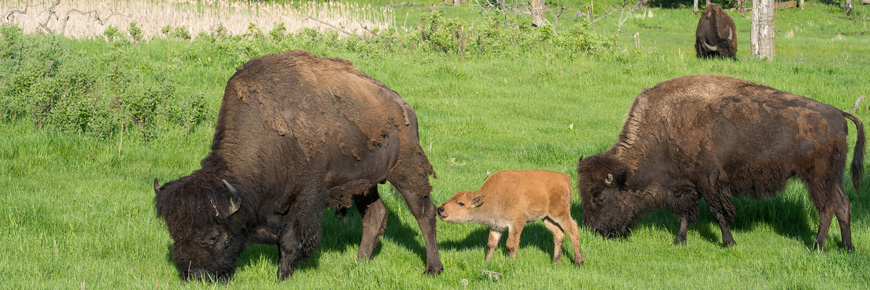
Rangeland health
Elk Island National Park
Rangeland is defined as land that is composed of vegetation that is usable as feed for animals like bison, deer and elk, called ungulates, which means “hoofed mammal”. Rangeland can include grasslands, pasturelands, forests, and wetlands. Changes in the intensity of ungulate grazing and /or an increased presence of invasive plants can indicate if the grassland health is declining. Rangeland health monitors multiple ecosystem components such as plant composition, animal use, soils, disturbance, invasive plants, and human influences to reflect the overall ecosystem function. Rangeland health is monitored through survey of over 70 plots in the aspen parkland ecoregion each year. Each site is assessed and given a health score based on these criteria:
- Does the plant community have natural structure, or has it been over-eaten?
- Are the plants that natively grow in the area present, or are there many invasive species?
- Is the soil deep and healthy, or is it eroding?
- After it rains, does the soil retain moisture, or does the water run off quickly?
- Date modified :